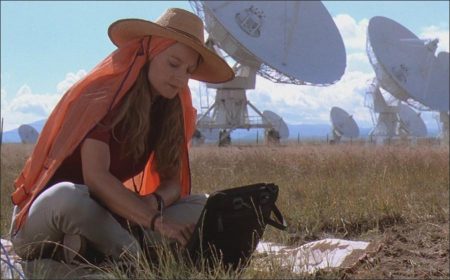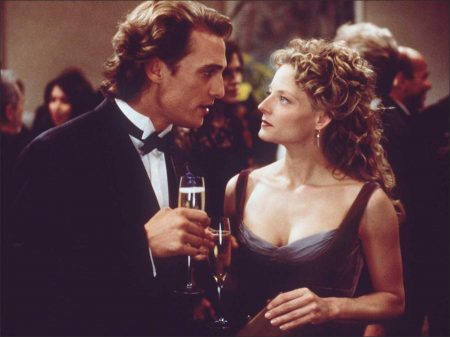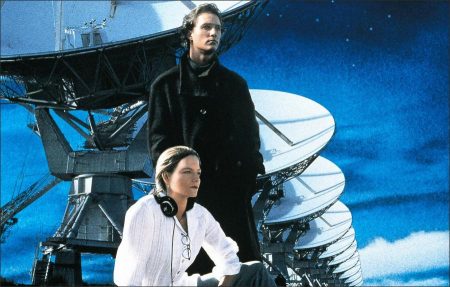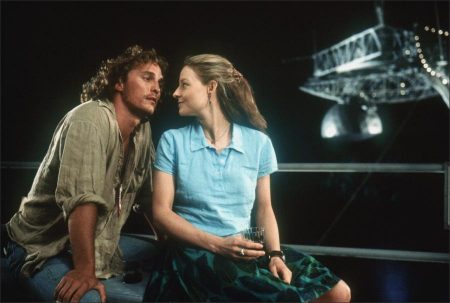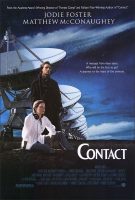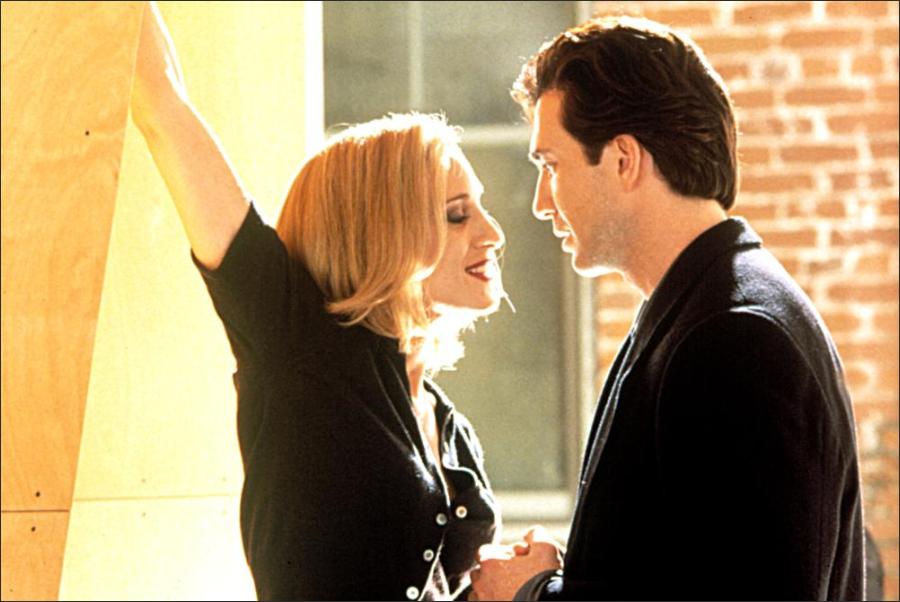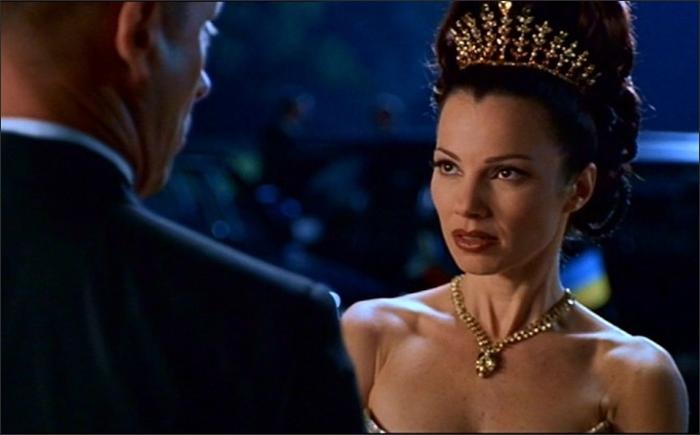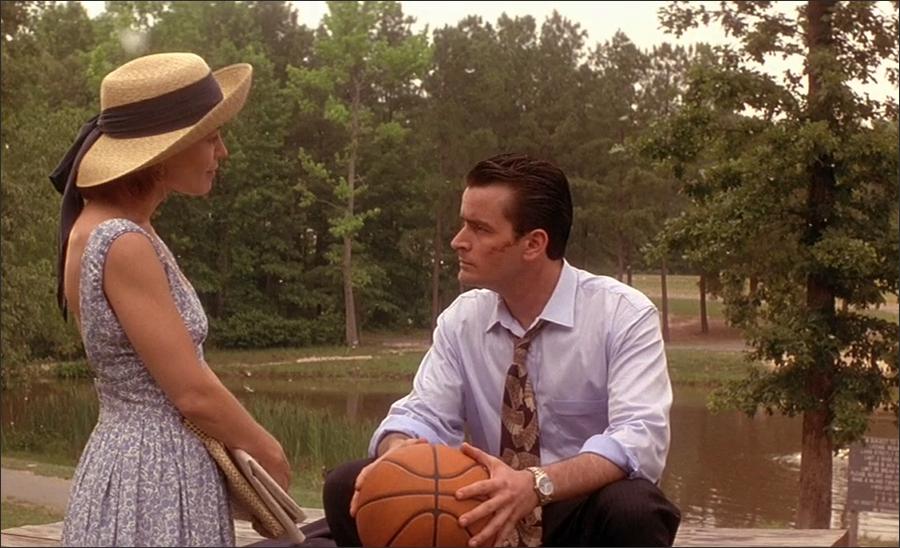Taglines: Get ready for human’s biggest discovery ever!
Contact movie storyline. Astronomer Dr. Ellie Arroway (Jodie Foster) has long been interested in contact to faraway lands, a love fostered in her childhood by her father, Ted Arroway, who passed away when she was nine years old leaving her then orphaned. Her current work in monitoring for extraterrestrial life is based on that love and is in part an homage to her father.
Ever since funding from the National Science Foundation (NSF) was pulled on her work, which is referred to some, including her NSF superior David Drumlin, as more science fiction than science, Ellie, with a few of her rogue scientist colleagues, have looked for funding from where ever they could get it to continue their work. When Ellie and her colleagues hear chatter originating from the vicinity of the star Vega, Ellie feels vindicated. But that vindication is short lived when others, including politicians, the military, religious leaders and other scientists such as Drumlin, try to take over her work.
When the messages received from space are decoded, the project takes on a whole new dimension, which strengthens for Ellie the quest for the truth. Thrown into the mix are the unknown person who has up until now funded most of Ellie’s work and what his motivations are, and Palmer Joss, a renowned author and theologian, who despite their fundamental differences in outlook, is mutually attracted to Ellie, that attraction based in part on intellect and their common goal of wanting to know the truth.
Contact is a 1997 American science fiction drama film directed by Robert Zemeckis. It is a film adaptation of Carl Sagan’s 1985 novel of the same name; Sagan and his wife Ann Druyan wrote the story outline for the film. Jodie Foster portrays the film’s protagonist, Dr. Eleanor “Ellie” Arroway, a SETI scientist who finds strong evidence of extraterrestrial life and is chosen to make first contact. The film also stars Matthew McConaughey, James Woods, Tom Skerritt, William Fichtner, John Hurt, Angela Bassett, Jake Busey, and David Morse.
Carl Sagan and Ann Druyan began working on the film in 1979. Together, they wrote a 100+ page film treatment and set up Contact at Warner Bros. with Peter Guber and Lynda Obst as producers. When development stalled on the film, Sagan published Contact as a novel in 1985 and the film adaptation was rejuvenated in 1989. Roland Joffé and George Miller had planned to direct it, but Joffé dropped out in 1993 and Warner Bros. fired Miller in 1995. Robert Zemeckis was eventually hired to direct, and filming for Contact lasted from September 1996 to February 1997. Sony Pictures Imageworks handled most of the visual effects sequences.
The film was released on July 11, 1997, to mostly positive reviews. Contact grossed approximately $171 million in worldwide box office totals. The film won the Hugo Award for Best Dramatic Presentation and received multiple awards and nominations at the Saturn Awards. Principal photography began on September 24, 1996, and ended on February 28, 1997. The first shooting took place at the Very Large Array (VLA) near Socorro, New Mexico.
“Shooting at the VLA was, of course, spectacular but also one of the most difficult aspects of our filming,” producer Steve Starkey said. “It is a working facility, so in order for us to accomplish shots for the movie, we had to negotiate with the National Science Foundation for ‘dish control’ in order to move the dishes in the direction we needed to effect the most dramatic shot for the story.”
After arduous first weeks of location shooting in New Mexico and Arizona, production for Contact returned to Los Angeles for five months’ worth of location and sound stage shooting that used a total of nine soundstages at Warner Bros. Studios in Burbank, and Culver Studios. All together, the art department created more than 25 sets.
In an attempt to create a sense of realism for the storyline, principal CNN news outlet commentators were scripted into Contact. More than 25 news reporters from CNN had roles in the film and the CNN programs Larry King Live and Crossfire were also included. Ann Druyan makes a cameo appearance as herself, debating with Rob Lowe’s character, Richard Rank, on Crossfire. In January 1997, a second unit was sent to Puerto Rico for one week at the Arecibo Observatory.
Other second unit work took place in Fiji and Newfoundland, Canada. Also essential to the production were a host of technical consultants from the SETI Institute, the California Institute of Technology, the VLA and a former White House staff member to consult on Washington D.C. and government protocol issues. Sagan visited the set a number of times, where he also helped with last-minute rewrites. Filming was briefly delayed with the news of his death on December 20, 1996. Contact was dedicated to Sagan: ‘For Carl’ comes on the screen at the fade.
Cinematographer Don Burgess shot the film in anamorphic format using Panavision cameras as well as using large format 65mm and VistaVision for special effects shots. The sound designers used Pro Tools software for the audio mixing, which was done at Skywalker Sound.
The original score was composed by Alan Silvestri, most of which was released on August 19, 1997, by Warner Bros. Records. The full score is approximately an hour long, 44 minutes of which is on the CD, including every major cue. The CD track entitled “Good to Go” features a slightly different opening—a brief brass motif that is not in the film—but all other cues are identical in orchestration to the mix in the film.
Contact (1997)
Directed by: Robert Zemeckis
Starring: Jodie Foster, Matthew McConaughey, James Woods, John Hurt, Tom Skerritt, Angela Bassett, Sami Chester, William Fichtner, Timothy McNeil, Max Martini
Screenplay by: James V. Hart, Michael Goldenberg
Production Design by: Ed Verreaux
Cinematography by: Don Burgess
Film Editing by: Arthur Schmidt
Costume Design by: Joanna Johnston
Set Decoration by: Michael Taylor
Art Direction by: Bruce Crone, Lawrence A. Hubbs
Music by: Alan Silvestri
MPAA Rating: PG for some intense action, mild language and a scene of sensuality.
Distributed by: Warner Bros. Pictures
Release Date: July 11, 1997
Hits: 256
